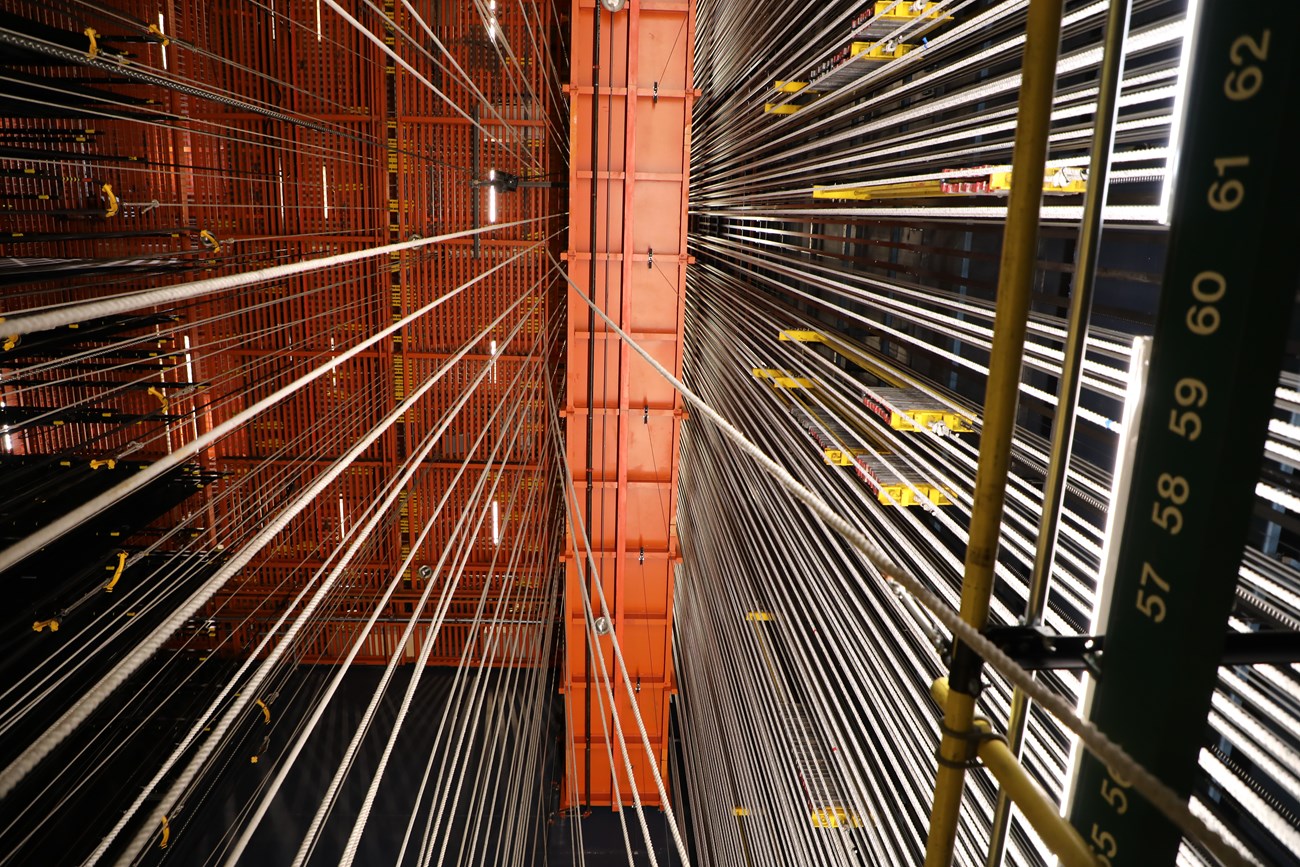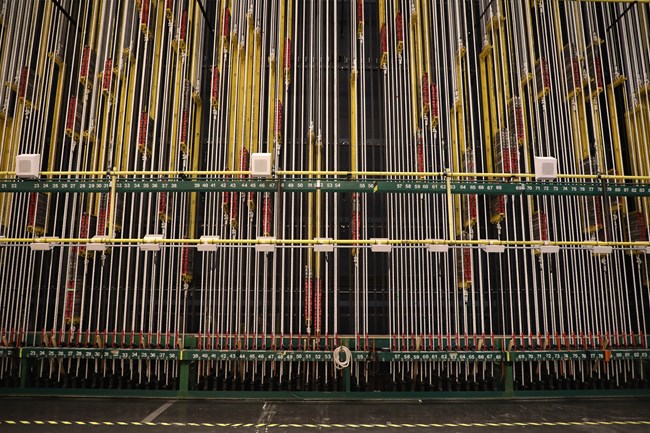
NPS Graphic Props and Sets and Equipment...Oh My!Border Lights - Type of general stage illumination; consists of a metal box spanning the width of the stage, containing a row of electric lamps aimed straight down. Each lamp is covered with a glass color filter, alternating red, blue, and green. The lighting board can control the intensity of each of these three general color groups. Borders - Short immovable drops spanning the stage across the top, masking the above stage lights and scenery. Box Set - An interior set consisting of three complete walls; the proscenium* is understood to be the fourth wall (and from this comes the term “breaking the fourth wall,” meaning to violate the convention that the plane of the proscenium is a physical, solid wall. *See Proscenium Arch definition Center Line - An imaginary line running down the stage through the exact center of the proscenium opening; typically marked “CL” on stage plans. Flat - A lightweight timber frame covered with scenic canvas or plywood. Flats are used to provide a lightweight, easily movable backdrop to a stage set.
Props (i.e. Properties) - Furnishings, set dressings, and all large and small items which cannot be classified as scenery, electrics, or wardrobe. *Proscenium Arch (or just proscenium) - The metaphorical vertical plane located “in front” of the curtain; the “picture frame” through which the audience sees the performance; the “fourth wall." Tabs (originally “Tableux Curtains”) - Refers to any stage curtains, including a vertically flying front curtain (house tabs) and a pair of horizontal moving curtains, which overlap at the center and move outwards. Wings - The out of view areas to the sides of the acting area. The wings are best identified by their position onstage, (e.g. “downstage left wing”) but they can also be identified by number if there are too many exits 
NPS / Anna Tripp Why is the Filene Center so tall?The Filene Center is 125 feet, from stage level to the top of the visible tower (parapet wall). The structure is called a fly tower. Inside the tower is a system for raising and lowering scenery, called the fly line system. With a usable stage opening height of 33’, you need a space 2 to 2.5 times higher in order to completely conceal scenery from the audience’s view. 
NPS / Anna Tripp Fly Line SystemThe Filene Center has 100 hand operated line sets. The hand operated lines are spaced on six inch centers, allowing for specific placement of scenery and lighting. Items that need to be hung above the stage are attached to battens, which are pipes that run the entire width of the stage. Line sets consist of the cables, batten, arbor and operating line.The theater has a single purchase counterweight system. This means for each pound of weight that is placed on the batten pipe, there must be an equal amount of weight on the rigging arbor (yellow brackets) on the fly lines. Stage hands load lead weight bricks onto the arbors from a loading bridge (about 90 feet above stage level) while the batten pipe is at stage level. To lift the batten pipe and any items attached to it, the operating lines (rope) are used to move the rigging arbor down, and lift the batten pipe up. |
Last updated: March 24, 2023
